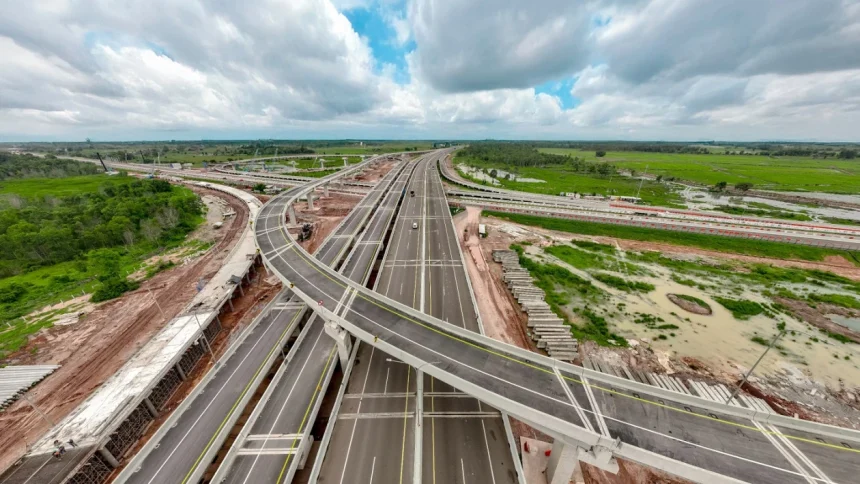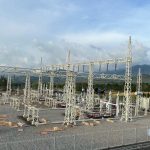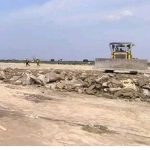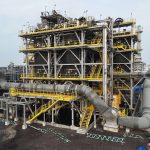In the construction world, project delays are not uncommon. Whether due to extreme weather, design revisions, material constraints, technical factors, or permitting that requires additional time—project extensions almost always have serious consequences, especially regarding insurance, liability, and bank guaranteesIt’s at this stage that many contractors or project owners become complacent, even though the risks that arise as the work period extends can actually increase significantly.
When a construction project is forced to be extended, all financial and legal protections previously established for the initial duration of the project must be reviewed.Contractor’s All Risks (CAR/TPL)may become invalid, limit liability can no longer protect additional work, and the periodBank guarantee(Performance Bond, Advance Payment Bond, or Maintenance Bond) can expire mid-process. All of this has the potential to trigger big loss, contract disputes, even lawsuits if not anticipated immediately.
Therefore, understanding what to prepare for when project duration changes is crucial to ensuring operations remain safe, orderly, and within contractual limits. Don’t let work progress while your financial protections are at risk.
To ensure your project extension is risk-free and all protections remain active,L&G Insurance Brokerready to help manage construction, liability and bank guarantee policy extensions quickly and professionally.
Contact us for a free consultation before your project enters the extension period.
Why Should Project Extensions Be Taken Seriously?
When a construction project is extended, many parties tend to focus solely on the physical progress: whether materials are sufficient, whether subcontractors are ready, and how a new schedule should be developed. However, there is one aspect that is far more crucial—risk protection and legal liability which automatically changes when the project duration exceeds the initial contract limit.
In the construction industry, time is a risk factor. The longer the construction time, the greater the potential for:
- work accident,
- material or structural damage,
- third party claims,
- technical errors due to schedule changes,
- or cost overruns.
In addition, many insurance policies and bank guarantees are designed only valid during the project period written at the beginning of the contract. This means that when the project passes that date,automatic protection stops, even though the work isn’t finished. This is a frequent source of problems in audits, project disputes, and even rejected insurance claims.
Therefore, ensuring that all protections are extended is not just a formality, butstrategic obligations to maintain the financial, legal, and operational safety of the project.
Major Risks When Construction Projects Are Extended
A project extension isn’t just about extending the timeline—it’s a significant change to the risk profile. Here are the most common risks that should be anticipated from the outset:
1. Increased Risk of Work Accidents
The longer a project lasts, the greater the workforce’s exposure to potential incidents.
Fatigue, the pressure of meeting new targets, and schedule changes are often triggers for increased accident rates—which can lead to large claims on the job.Contractor’s All Risks (CAR) or Workmen Compensation.
2. Damage to Materials, Equipment, or Structures
Elongation means the material is exposed to weather and the environment for longer.
For bridge projects, high-rise buildings, or electrical installations, this increases the potential for damage due to:
- extreme weather,
- long-term humidity,
- storage that exceeds safe limits.
If the CAR policy is not renewed, this type of damage can occur.not get compensation.
3. Risk of Third Party Involvement
The longer a project takes, the greater the risk:
- damage to local residents’ property,
- hit by falling material,
- traffic disruption,
- legal demands from the surrounding environment.
This is directly related toThird Party Liability (TPL)in construction policy.
4. Additional Force Majeure Risks
Extended timeline = additional rainy season, floods, storms, or other natural events—which could increase the level of damage and the potential for major financial losses.
5. Claims that can be rejected due to an inactive policy
This is the most fatal risk.
If the project is extended butThe police did not extend the extension., companies can:
- bear all the costs of the loss himself,
- facing a legal dispute with the owner or investor,
- failed to fulfill contractual obligations.
6. Financial Risks in Bank Guarantees
Time of occurrencePerformance Bond, Advance Payment Bond, or Maintenance Bond usually follows the contract period.
If not extended:
- the company may be deemed to be in default,
- bank guarantees can be cashed unilaterally,
- The contractor’s reputation could decline in the eyes of the project owner and the bank.
Solution: What Should Be Renewed & How to Set It Up?
When a construction project is officially extended, you can’t simply change the technical timeline. There are three crucial components that must be updated to keep the project safe, legal, and secure:insurance policy, liability protection, and bank guarantee. Here is the complete explanation.
1. Construction Insurance Policy Extension (CAR/EAR)
The CAR/EAR policy is the backbone of project protection. When the timeline changes, the policy’s validity period must also be adjusted. Renewals are required for:
- Section I:Damage to construction work due to accidents, weather, negligence, technical errors, etc.
- Section II:Third Party Liability.
- Important add-ons: DSU/ALoP, Surrounding Property, Maintenance Cover, dan Cross Liability.
Things to pay attention to when renewing your policy:
- Recount project progress to assess the remaining insured value.
- Make sure there is no gap period(blank period) when the previous policy expires.
- Customized additional premium because extensions usually incur additional daily or monthly fees.
2. Extension of Liability Protection
During the extension phase, work intensity may decrease, but liability risks actually increase. This is because workers, materials, heavy equipment, and field activities continue.
Protection that must be ensured to be active:
- Third Party Liability (TPL) – for claims for damage or injury to external parties.
- Workers’ Compensation / BPJS Employment– for work accidents.
- Employer’s Liability (EL) – if the project has additional exposure related to labor that is not a direct employee.
Things that are often forgotten:
- Adjustment of road access for local residents during the extension.
- Additional protection for finishing work (sometimes the most incident-prone).
- Risiko extended maintenance.
3. Extension of Bank Guarantee (BG)
All bank guarantees must be extended following the new contract. The types of BGs that typically require adjustments are:
- Performance Bond(the most critical)
- Advance Payment Bond
- Retention Bond / Maintenance Bond
If not extended:
- The owner has the right to fully liquidate BG.
- The contractor may be declared in default.
- Blacklisting from the next tender is very possible.
What you need to prepare:
- Bank guarantee/rollover application letter.
- Contract addendum indicating adjustments to the project schedule.
- Technical justification from the supervising consultant regarding why the project was extended.
- Update the collateral value if there is a change in project costs.
Why Project Delays Aren’t Always the Contractor’s Fault?
In many cases, construction project extensions are often seen as a sign of the contractor’s failure to manage time and resources. However, the truth is, delays don’t always originate with the contractor. Here are some reasons why project extensions can occur without the contractor’s fault:
1. Force Majeure and Unforeseen Events
Conditions such as natural disasters (floods, earthquakes), pandemics, or other unforeseen extraordinary events often cause significant delays. Contractors are usually not responsible for these.
2. Changes in the Scope of Work (Variation Order)
The project owner or supervising consultant may request additional work or design modifications not included in the initial contract. This requires additional time and directly impacts the project schedule.
3. ConstraintsLicensing And Regulation
Lengthy permitting processes or changes in government regulations can delay construction. These are beyond the contractor’s control but must be complied with.
4. Delay in Material Supply
Logistics and supply chain factors, such as delays in raw material deliveries, are often the main cause of schedule delays. This can be caused by suppliers, weather, or transportation issues.
5. Unexpected Field and Technical Conditions
Soil issues, archaeological discoveries, or other technical challenges that are only discovered during the work can add to the construction time.
Understanding that delays aren’t always the contractor’s fault helps all parties view the project more objectively and professionally. However, regardless of the cause, risk mitigation and legal protection must remain in place to safeguard the interests of all parties.
The Role of Insurance Brokers in Supporting Project Extensions
As construction projects extend, the complexity of risks and the need for protection increases. This is where the role of insurance broker becomes very crucial, as a professional liaison between contractors, project owners, and insurance companies.
1. Re-analyze Risk and Protection Needs
The broker will reassess the project’s risk profile, which has changed due to the extension. This includes reviewing potential new risks and ensuring the coverage remains appropriate to the current situation.
2. Negotiation and Extension of Insurance Policy
Brokers help expedite the process of renewing CAR, liability, and employment insurance policies, including negotiating reasonable additional premiums according to the renewal period and risk conditions.
3. Adjusting Policy Wording
In extensions, there is often a need to adjust the scope of protection, exclusions, or certain clauses to better suit field conditions and the terms of the new contract.
4. Consultation and Education
Brokers provide strategic advice on how to manage risks, how to minimize claims, and preventive measures that need to be taken during the project extension period.
5. Assistance When a Claim Occurs
If the risk materializes, the broker will accompany the contractor and project owner through the claims process, ensuring the claim is processed smoothly and on time.
6. Coordination of Bank Guarantee Extension
In addition to insurance, brokers can also help manage bank guarantee extensions, ensuring all documents and administrative processes are completed on schedule.
Strategic Recommendations for Contractors and Owners in Managing Project Extensions
To ensure that the construction project extension runs smoothly and risks can be minimized, here are a number of strategic steps that contractors and project owners should take:
1. Immediately Conduct Formal Evaluation and Communication
Once the decision to extend the project is made, conduct a thorough evaluation of the causes of the delay and its potential impact. Formally communicate the results of this evaluation to all stakeholders, including the employer, subcontractors, and insurers.
2. Update and Renew Contract Documents and Addendums
Ensure that changes to the project duration and associated costs are clearly stated in a valid contract addendum so that all parties have a strong legal basis.
3. Check and Renew All Insurance Policies
Immediately coordinate with your insurance broker to extend your CAR, liability, and employment insurance policies so that your coverage remains active without any gaps.
4. Extend the Bank Guarantee According to the New Schedule
Ensure all applicable bank guarantees—performance bonds, advance payment bonds, maintenance bonds—are extended according to the duration of the new contract to avoid the risk of default.
5. Manage Cash Flow and Budget Tightly
Extensions typically result in increased operational costs. Create a realistic new cash flow plan and anticipate additional funding needs to avoid project disruptions.
6. Increase Focus on Work Safety and Field Supervision
Longer project durations increase the risk of accidents. Implement strict safety standards and conduct regular training for all workers.
7. Monitor Environmental and Social Risks
Project extensions could impact the surrounding community and the environment. Maintain communication and implement necessary mitigation measures to avoid conflict.
8. Use the Services of a Professional Insurance Broker
Take advantage of broker expertise such as L&G Insurance Brokers to assist with comprehensive risk management and insurance administration, so you can focus on project implementation.
Conclusion
Construction project extensions are not simply administrative or technical issues, but also significant challenges in terms of risk, legal protection, and financial resources. Without proper management, extensions can open the door to significant losses, from denied insurance claims to legal consequences resulting from expired bank guarantees.
Therefore, every contractor and project owner must understand the importance of updating all existing protections: starting from the policy.Contractor’s All Risks (CAR), Third Party Liability, labor insurance, to all typesBank guaranteewhich supports the smooth running of the project.
Don’t let unprotected risks hinder your project’s success. Entrust your insurance policy renewal and bank guarantee needs to us.L&G Insurance Brokers, a professional partner experienced in managing construction risks.
Contact us now for personalized consultation and protection solutions tailored to your project needs. With L&G, your construction project remains safe, secure, and runs smoothly until completion.
—
DON’T WASTE YOUR TIME AND SECURE YOUR FINANCIAL AND BUSINESS WITH THE RIGHT INSURANCE.
HOTLINE L&G 24 JAM: 0811-8507-773 (CALL – WHATSAPP – SMS)
Website: lngrisk.co.id
Email: halo@lngrisk.co.id
—















